- The Case for Brand
- Posts
- 📈 How Tony's Chocolonely Grabbed 19% of the $119B Chocolate Market By Marketing a Mission, Rallying Allies, & Embracing a Challenger Mindset
📈 How Tony's Chocolonely Grabbed 19% of the $119B Chocolate Market By Marketing a Mission, Rallying Allies, & Embracing a Challenger Mindset
Making doing good taste good 🍫
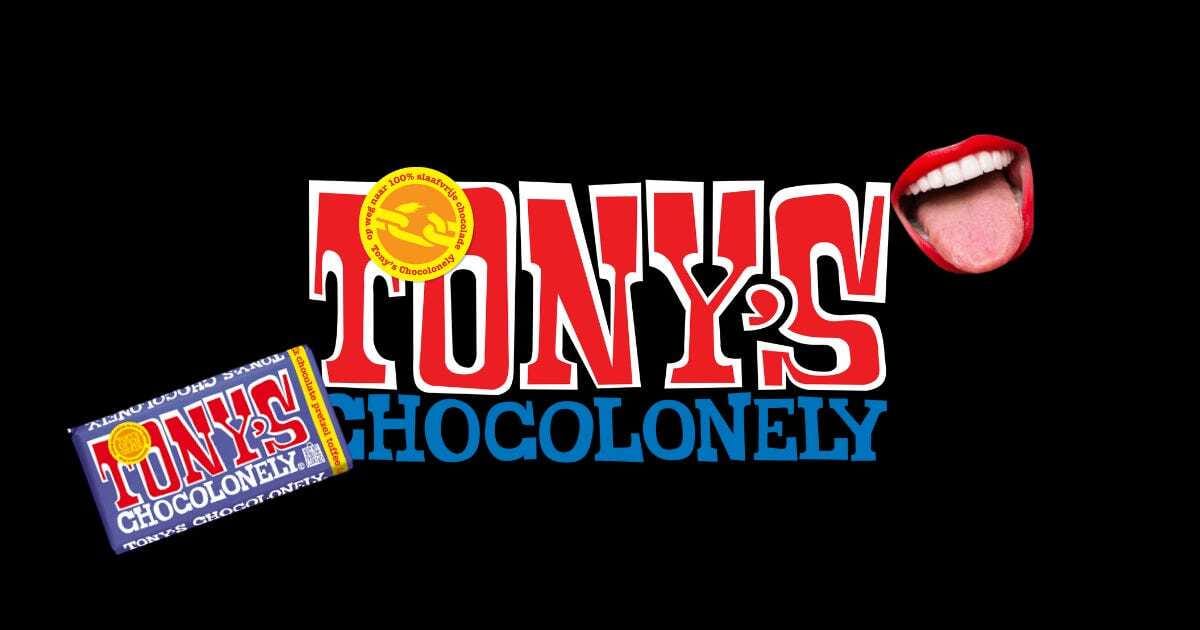
Tony’s Chocolonely is a masterclass in building an impact-first challenger brand—transforming investigative journalism into 19% market share in a $119B industry by marketing a mission, rallying competitors as allies, and locking purpose into every bar.
👋 Hi, I'm Amanda. I'm a brand strategist and fractional CMO. I help founder-led businesses turn belief into brand—and brand into a strategic asset. I share weekly deep dives on brand building with actionable advice—plus interviews with the people in the trenches. I also work 1:1 with founders and teams. Book a chat here.
Who Will Love This
Chocolate fiends
Impact lovers
FMCG-heads
Challenger brand stans
Today
G’day! After years wrestling with in-store promos, I can’t help but cheer when a challenger brand nails purpose and profit in one go.
Selling 20,000 bars in two days. Beating Hershey’s and Mars to a 19% market share in the Netherlands. Today’s deep dive: Tony’s Chocolonely, the impact-first CPG brand that grows by selling change as much as chocolate.
Today’s deep dive: Tony’s Chocolonely, a masterclass in building an impact-first, challenger CPG brand that’s grown by selling change as much as chocolate.
Too many brands play it safe. Founder-led, mission-driven companies flip the script—they’re powered by purpose, not just margins. That long-game mindset fuels lasting brands.
Tony’s shows us how to:
Own an origin story. Investigative journalism on child labor became a movement—and an exploitation-free chocolate bar.
Scale with impact. Tony’s beat incumbents with WAY more marketing dollars (see Mars,Nestlé) to a 19% share in the Netherlands—without sacrificing their mission.
Activate allies. Tony’s “Open Chain” invites other brands into its exploitation-free supply chain, multiplying Tony’s impact beyond every bar.
Lock in your purpose. A golden-share structure gives veto power over any mission or sourcing changes, cementing Tony’s impact in its DNA
P.S. New here? This newsletter is for brand-builders who crave both inspiration and actionable advice. I’m Amanda—a brand strategist and fractional CMO with agency chops and in-house CMO experience. Let’s dive in.
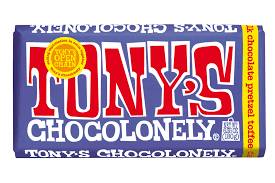
Business Strategy
Tony’s Chocolonely: From Investigative journalism to Impact-Driven Chocolate
In 2005 in the Netherlands, TV journalist Teun van de Keuken set out to expose child-labor and exploitation in the cocoa industry on his show Keuringsdienst van Waarde. After three years of hard-hitting reports and no real change, he decided to go further—by making his own chocolate.
He launched Tony’s Chocolonely—a name that nods to his own name (Teun = “Tony”) and his solitary fight against modern slavery in cocoa (“Chocolonely”). The first run sold 20,000 bars in two days, proving there was a market for ethically sourced, mission-driven chocolate.
Today, Tony’s is more than a chocolate brand—it’s a global movement. You can find their bars (and their “Open Chain” slave-free supply network) from the US and UK to Japan, Sweden, and beyond—showing that purpose can scale alongside profit.
How do you market a mission? Let’s see how Tony’s did it.
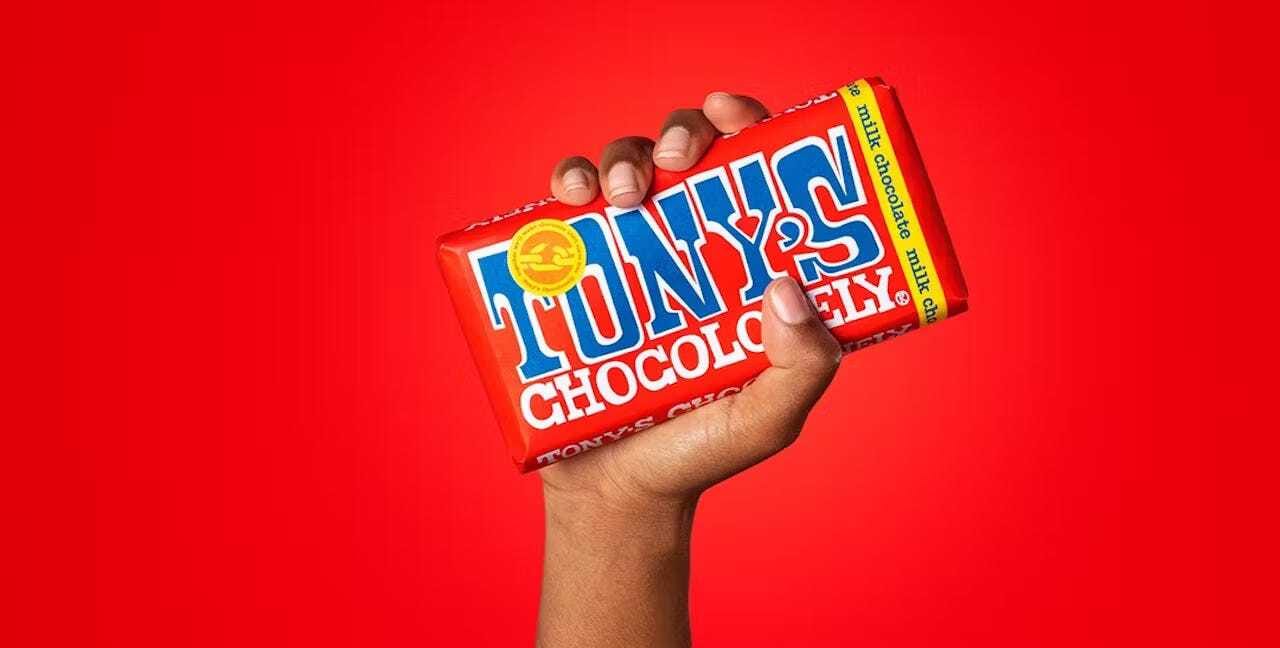
Sell chocolate bars, fund change
Tony’s plays two simultaneous games: it sells chocolate and fuels the fight against modern-day slavery.
In CPG, customer loyalty hinges on two things:
Quality—does it taste great?
Freshness—new flavors, innovations, or partnerships to keep you curious.
That’s why industry giants—Mondelez (think Cadbury), Nestlé (KitKat), Hershey, and Mars—pour millions into R&D, co-brand collaborations, seasonal releases, and global roll-outs to stay top-of-mind.
On the flip side, newer disruptors like MrBeast’s Feastables have leveraged owned audiences and broken through by going direct to consumer.
Tony’s advantage? An audience-centric model that’s also impact-oriented.
Brand strategy
Turn Purpose into Positioning
A strong brand strategy aligns directly with Tony’s dual goals—selling chocolate and ending exploitation. For Tony’s, mission isn’t rhetoric; it’s the positioning, promise, and playbook.
Differentiation: “Exploitation-free chocolate” versus “just another treat.”
Trust & Transparency: Public supply-chain data and impact metrics build credibility no ad spend can buy.
Advocacy & Amplification: Mission-driven storytelling and community “asks” (petitions, stunts, co-creation) turn customers into unpaid ambassadors.
While incumbents chase incremental tweaks, Tony’s brand engine—rooted in purpose, proof, and people—powers both sales and social impact.
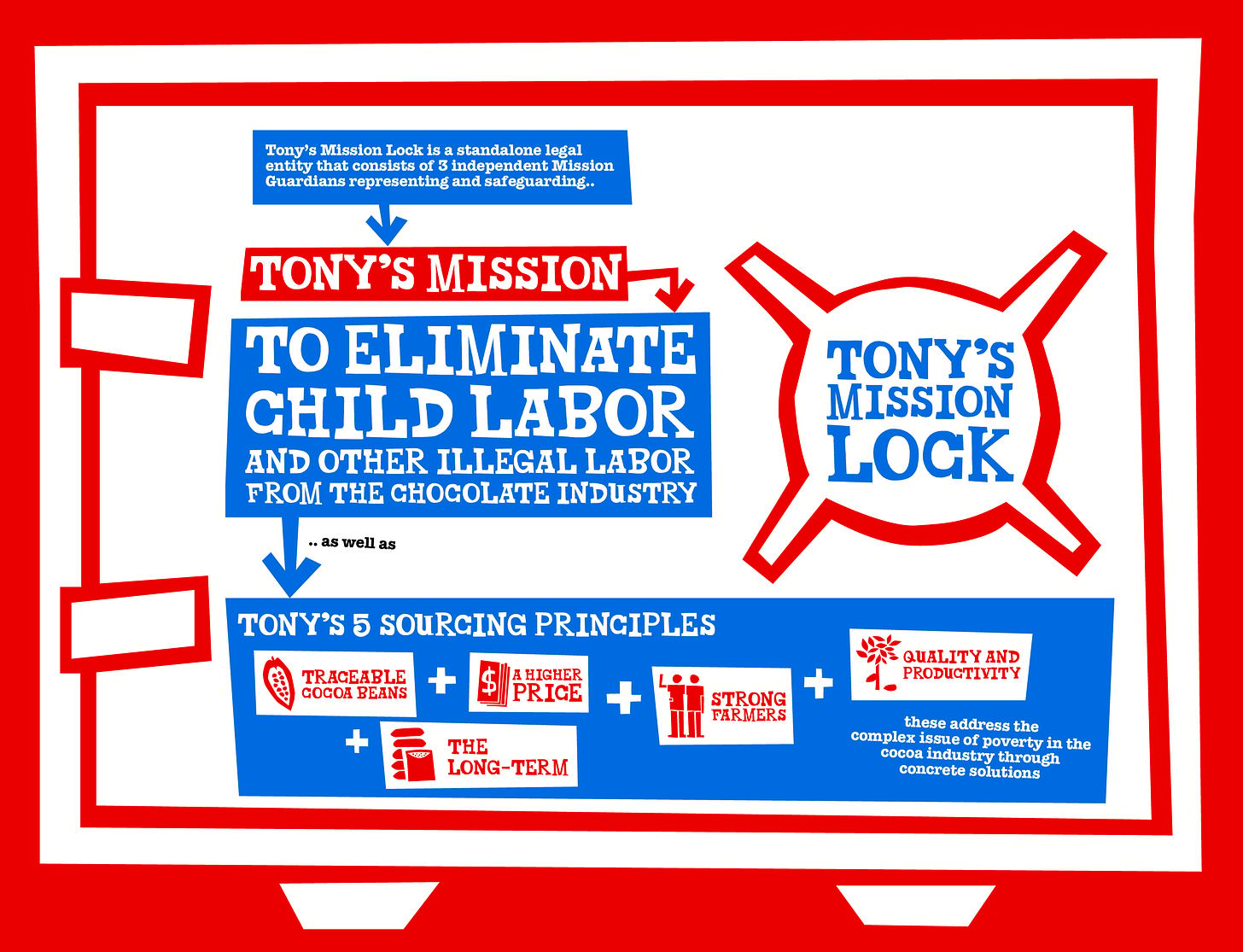
Why it works for Tony’s
Customer-Facing Mission: Unlike many brands whose purpose lives behind the scenes, Tony’s puts its anti-exploitation crusade front and center—which also very conveniently meets growing demand for ethically made goods and makes it incredibly easy to talk about (like this clip of John Oliver spruiking Tony’s 👇).
Built-In Alignment: Impact-driven companies have fewer internal debates about “does this fit our brand?” when every tactic (product, packaging, PR) advances the same cause. Tony’s has taken this further than most, enshrining its purpose in a ‘mission lock’ - a legal structure that protects its mission from being changed.
Brand principles in action
Chocolate with a conscience
The brand strategy, as I see it 👇
1️⃣ Market the Mission, Not Just the Bar Anchor every campaign in Tony’s evergreen origin story (problem → awareness → action). When your narrative is inherently shareable—you unlock organic amplification that outperforms any paid media buy.
2️⃣ Collaborate on Cocoa, Compete on Chocolate Tony’s publishes full supply-chain data and invites peers (Ben & Jerry’s, Waitrose, etc.) into an “Open Chain.” They earn credit for the heavy lifting and benefit from the PR buzz when others follow their lead.
3️⃣ Stand Out Visually & PhilosophicallyFrom primary-colored wrappers and unequal bar segments to fun titles (“Dean of Dopeness” vs. “Chief Brand Officer”), every touchpoint reinforces Tony’s playful, purpose-driven personality—ensuring the brand is impossible to ignore on shelf or screen.
The way I like to evaluate brand principles?
Strong brand principles:
✅ Commit you to actions that cement your desired positioning in people’s minds
✅ Can be executed over many years
✅ Are things competitors can’t do or won’t invest in
Brand Marketing Moves
Brand is who you are; marketing is how you tell people who you are. If brand lives in the mind, marketing is the how you put it there—storytelling, framing, signalling—and commands a premium (Hershey’s $1.99 vs. Tony’s $5.99—and that, my friends, is the business case for brand).
Tony’s playbook:
Chocolate as the channel. Primary-colored wrappers that leap off the shelf. Mission driven copy inside the foil. Collabs with values-aligned companies like Ben & Jerry’s. An unequally divided chocolate bar physically symbolizes the inequality that exists within the global cocoa supply chain 🤯
Community as coalition for change. Tony’s turns chocolate fans into mission allies with exclusive bar drops, impact reports, and co-creation opportunities to turn buyers into passionate advocates, and competitors into collaborators.
Partnering in transparency: Tony’s open sourcing of their supply chain (“Open Chain”) allows them to challenge like-minded businesses like Ben & Jerry’s, Waitrose—and even its competitor, Toblerone—to source through its transparent, exploitation-free network, multiplying impact and earned media. I’m a fan.
Tony’s doesn’t just talk about impact—they market it. Every wrapper, petition, and partnership is a chance to reinforce that this isn’t a chocolate brand with a mission, it’s a chocolate brand because of a mission.
What can we learn from Tony’s?
Impact-focused brands: these lessons are yours to mull over and learn from—brand strategy isn’t a copy-paste playbook.
Package your purpose. Don’t just sell features—make your core belief part of the story. This gets you out of features and discounts and into conversations far beyond “tastes good.”
Turn customers into co-creators. Small asks scale into massive earned reach when customers feel like true allies, not just buyers.
Great stories spread faster than any paid ad. Leverage authentic moments—founder crusades, behind-the-scenes insights, impact wins—and watch them spread faster than any ad.
Hot jobs 👀
The jobs that caught my eye this week ✨
[Agency] Digitas is hiring a Senior Vice President of Brand Strategy.
[In-house] Amazon is hiring a Senior Social Brand Marketing Lead for Alexa.
[In-house] Block is hiring a Principal Brand Designer.
[In-house] Vacation is hiring a Senior Brand Manager.
Brand news 🗞️
The work that caught my eye this week 🎨
Hinge nails its “No Ordinary Love” follow-up with IRL books + Substack + BookTok synergy.
Tracksuit’s new campaign ‘executive realness’. B2B marketing doesn’t have to be boring and Tracksuit are continually proving it 💥
Airbnb’s new work with Buck, marketing their ‘experiences’ offering and encouraging people to ‘not just see a place, experience it’.
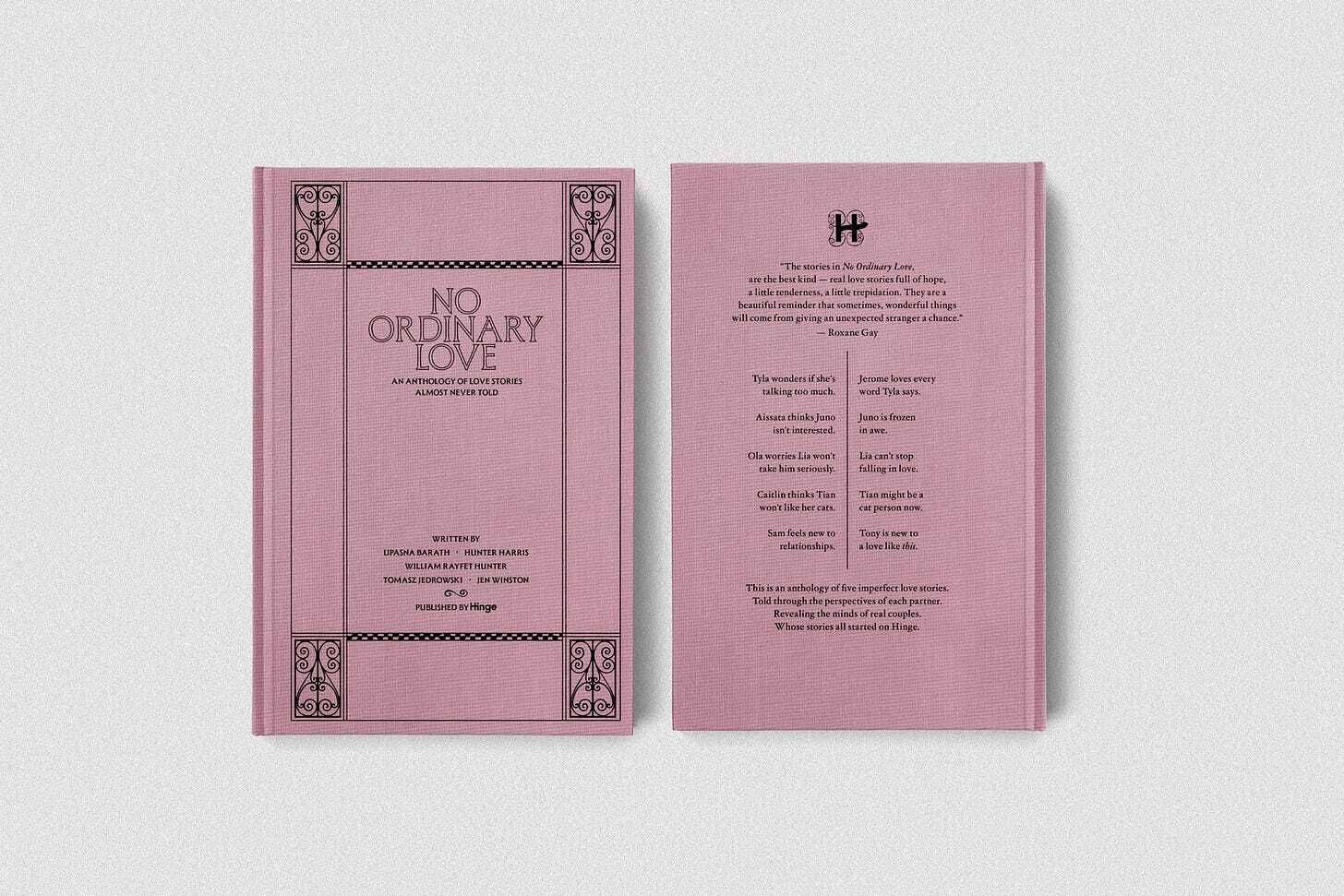
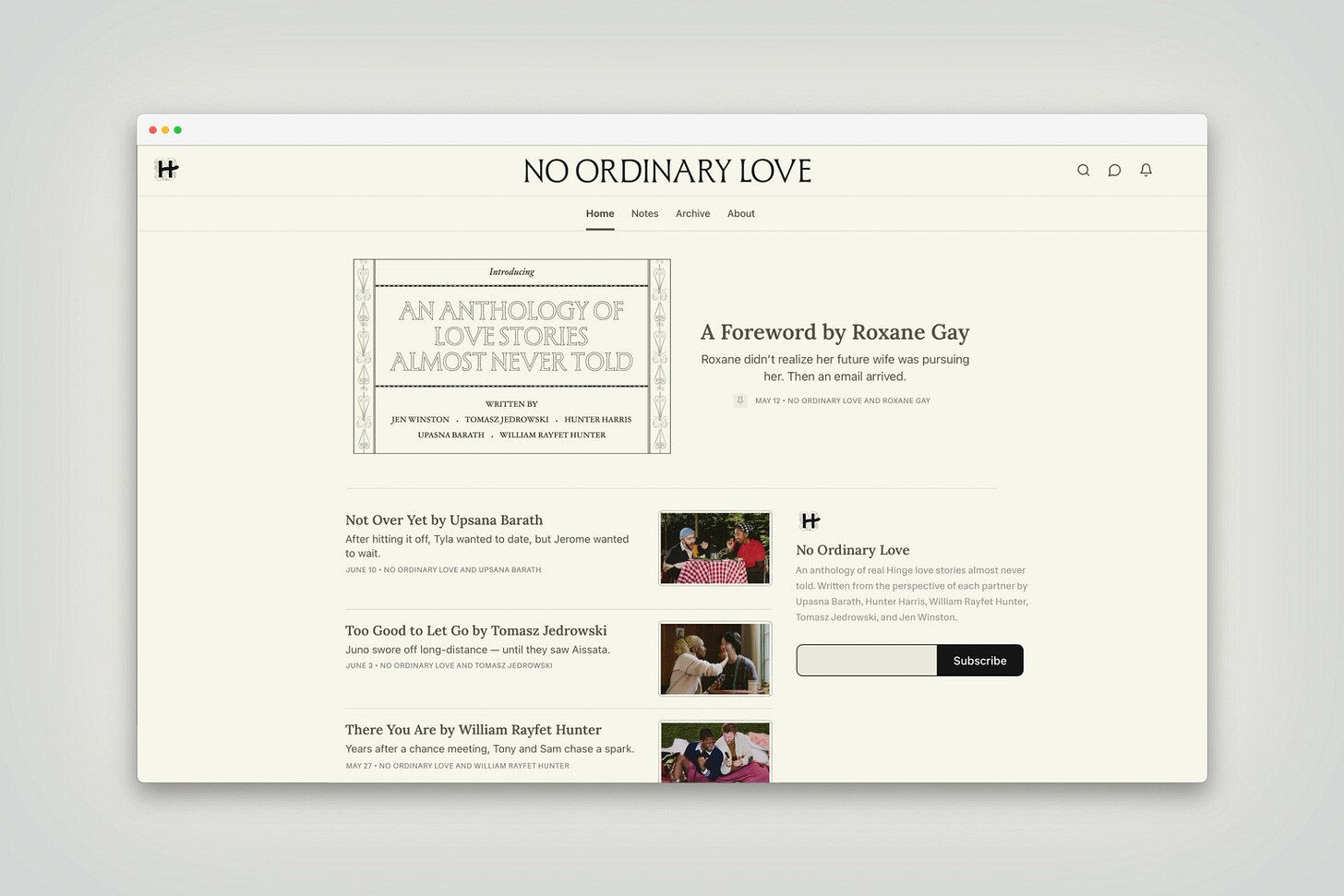
Call me, beep me 📞
🗒️ Want more stories like this? Subscribe to the newsletter.
👋 Let’s stay in touch—connect with me on LinkedIn.
👩💻 Got a bold brand to build? Book a chat.
👯♀️ Anyone attending Mercury Spheres next week? Drop me a note if so, I’ll be there!